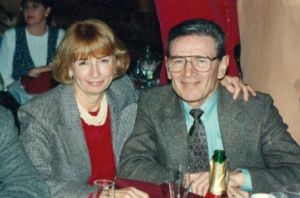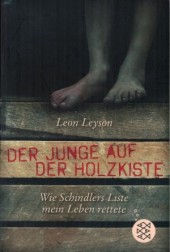"Leon Leyson was a truly extraordinary man. The world will never be the same without him, but we're lucky to have this book."
Steven Spielberg, RegisseurRead more:
† 12. January 2013 in Los Angeles, USA
Nationality at birth: Poland
Nationality at death: USA
 Father
Father
Mosche Lejzon
* Polen† 1971 USA
 Mother
Mother
Chanah Lejzon
* Polen† 1971 USA
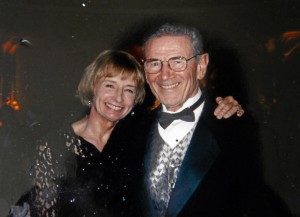 Partner
Partner
Elisabeth (Lis) Leyson
 Siblings
Siblings
Herschel Lejzon
 Siblings
Siblings
David Lejzon
 Siblings
Siblings
Constance Miriam (Stacy) Leyson
 Siblings
Siblings
Constance Miriam (Stacy) Leyson
 Silblings
Silblings
Pesza Lejzon
 Child
Child
Daniel Tsalig Leyson
* 28. April 1970| Area | Type | From | To | Location |
|---|---|---|---|---|
| Profession, Activities | Teacher |
Leitmotif
Leon Leyson was born in 1929 under the name Leib Lejzon in Poland. He was one of the youngest of the Jews persecuted by the Nazis and saved by the factory owner Oskar Schindler. After the Second World War he emigrated with his family to the USA, where he worked as a teacher. He refused to let the Holocaust determine his life.
How did the story become known?
By his autobiography
When did the story become known?
2013
Where did the story become known?
USA
By whom did the story become known?
By Leon Leyson, because he wrote his autobiography.
Own works
Leon Leyson, Der Junge auf der Holzkiste. Wie Schindlers Liste mein Leben rettete. Aus dem Amerikanischen von Mirjam Pressler. 2. Aufl., Frankfurt am Main: Fischer, 2016 (Original 2015).
Leon Leyson: The boy on the wooden box: How the impssoible became possible … on Schindlers’s list. New York: Atheneum Books for Young Readers, 2013.
- Family environment
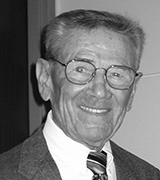
INTRODUCTION
Leon Leyson was born in 1929 under the name Leib Lejzon in Poland. He was one of the youngest of the Jews persecuted by the Nazis and saved by the factory owner Oskar Schindler. After the Second World War he emigrated with his family to the USA, where he worked as a teacher. He refused to let the Holocaust determine his life.
THE STORY
An incredible story of the will to survive in dignity.
 Leon Leyson was born in 1929 under the name Leib Lejzon in Narewka, a village in Poland. He is the youngest son of Mosche and Chanha Lejzon. Leon has four older siblings, Herschel, Tsalik, his sister Pesza, and David. When he was still a young boy, around 1933, his father decided to leave Narewka and take a better paid job in Krakow. Always striving to give his family a good life, he goes alone, saving money and catching up with his family in a few years.
Leon Leyson was born in 1929 under the name Leib Lejzon in Narewka, a village in Poland. He is the youngest son of Mosche and Chanha Lejzon. Leon has four older siblings, Herschel, Tsalik, his sister Pesza, and David. When he was still a young boy, around 1933, his father decided to leave Narewka and take a better paid job in Krakow. Always striving to give his family a good life, he goes alone, saving money and catching up with his family in a few years.
From now on Chanha Lejzon is alone with her children. But thanks to the support of his grandparents Leon has a beautiful childhood. With his grandfather, Jacob Meyer, the boy visits the synagogue. He admires his big, strong grandfather, who is such a hard-working man.
 In 1938 it is finally time: Leon travels with his mother and siblings to Krakow to his father. The greatest thing in the new home, he later remembers, was the toilet. But the initially more unworried new life in Krakow came to an abrupt end in the autumn of 1938. In the night from 9 to 10 November, the synagogues are set on fire by the National Socialists, Thora rolls are burned and the property of people belonging to the Jewish religion is destroyed. Jews are beaten and about a hundred people are murdered. This night will later go down in history as the so-called Reichskristallnacht.
In 1938 it is finally time: Leon travels with his mother and siblings to Krakow to his father. The greatest thing in the new home, he later remembers, was the toilet. But the initially more unworried new life in Krakow came to an abrupt end in the autumn of 1938. In the night from 9 to 10 November, the synagogues are set on fire by the National Socialists, Thora rolls are burned and the property of people belonging to the Jewish religion is destroyed. Jews are beaten and about a hundred people are murdered. This night will later go down in history as the so-called Reichskristallnacht.
In the summer of 1939, the inhabitants of Krakow finally prepared for the war. Window panes are glued from the inside, canned food is stored, bomb cellars are laid out for their own protection. Little Leon, of course, has no idea what to expect from him and his family. On 6 September 1939 the German soldiers marched into Krakow. The years in hell begin.
 The occupiers order that only 15,000 Jews may remain in Krakow. Thanks to the work permit that Leon’s father had, the family was allowed to stay, and his father’s job also helped in other respects. He gets lunch at the factory and on some days he can take a bit of it and bring it home with him.
The occupiers order that only 15,000 Jews may remain in Krakow. Thanks to the work permit that Leon’s father had, the family was allowed to stay, and his father’s job also helped in other respects. He gets lunch at the factory and on some days he can take a bit of it and bring it home with him.
At the end of 1940 a ghetto for Jews was set up in the southern part of Krakow. For this purpose, an existing residential area was cleared and demarcated with high walls to house the 15,000 Jews still living in Krakow. At the beginning of March 1941, the family had to move to the ghetto where the Jews were forced to live and which was walled with gravestones to the horror of the new arrivals. A time of hope, anxiety and above all loss begins. Every few weeks a train with ghetto inhabitants leaves for a national socialist concentration camp. Those who don’t sit in it either have a lot of luck or are used as forced labourers in one of the factories.
At this time, Leon’s father was already working in a factory owned by Oskar Schindler (1908-1974), who in October 1942 was told of another transport to one of the National Socialist concentration camps, and therefore kept his workers overnight in the factory. That night Leon and his mother were left on their own and managed to go into hiding. For almost 48 hours Chanah hides with Leon and two boys under a roof with 25 centimetres of air space upwards. Without provisions and toilet, quiet as a mouse, they have to persevere, always fearing to be discovered. Everyone knows what would happen then.
In March 1949, the Krakow ghetto was finally evacuated. Everybody has to get out. The Plaszow camp is the new destination. Somehow Leon manages again to fight his way to his mother, and miraculously the two of them leave the camp together to work in Schindler’s factory as well. Leon, his father and his brother were already on Schindler’s list, his mother on another list, together with about three hundred other women. A little later, Leon’s father succeeds in having Leon’s sister Pesza put on the list as well.
On October 15, 1944, Leon, his brother and his father are taken to the Groß-Rosen concentration camp about 280 kilometers northwest of Krakow. Now almost devastated, they are transported one afternoon at the instigation of Oskar Schindler. A little later, Leon’s mother and sister arrive at the labour camp, which is an indescribable day of happiness for the family and seems like a miracle.
Finally, on 8 May 1945, a Russian soldier drives through the factory gate and announces the liberation. They made it, they survived. Oskar Schindler also made it: he flees a few nights before and leaves behind about 1,200 persecuted.
 In Krakow, Leon’s father succeeds in working in the glass factory again. The family finds shelter in a dormitory. But the situation in the city worsens noticeably. Even now, after the liberation, the Jews are a thorn in the side of the population of Krakow. The best solution, they realize, is to leave Krakow. The family drives via Salzburg to a displaced person camp in Wetzlar, which at that time was located in the American occupation zone. They are homeless, stateless and again in a camp, but at least with three meals a day, medical care and under the protection of the American military.
In Krakow, Leon’s father succeeds in working in the glass factory again. The family finds shelter in a dormitory. But the situation in the city worsens noticeably. Even now, after the liberation, the Jews are a thorn in the side of the population of Krakow. The best solution, they realize, is to leave Krakow. The family drives via Salzburg to a displaced person camp in Wetzlar, which at that time was located in the American occupation zone. They are homeless, stateless and again in a camp, but at least with three meals a day, medical care and under the protection of the American military.
Pesza and David, Leon’s brothers and sisters, joined a group of Zionists during the camp with the mission: Israel! In Wetzlar all refuel. Leon is taught by a German engineer. Then his parents get in touch with the cousin of his mother, who lives in Los Angeles and is happy to still have living relatives.
In May 1949, after almost three years in Wetzlar, the three receive positive confirmation of their application for immigration to the USA. Hard to believe, but they are allowed to travel to the United States of America. At nineteen, Leon is finally about to start a new life. Once in America, he and his parents stay with his mother’s cousin for a few weeks. They learn English and Leon’s father soon finds work as a janitor at a primary school. So the family can quickly provide for itself. In 1951 Leon finished commercial school and immediately afterwards he was drafted into the US army.
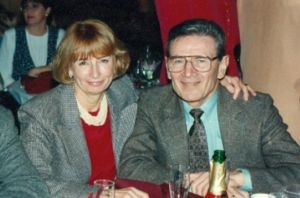 Towards the end of his military training, Leon learns for the first time that patterns can be repeated. In a bus, he takes a seat in the back and is told: “The back seats are for negroes”. The words of the bus driver hit the young man like a bolt of lightning. Only now does he discover that the country he begins to love also has inequalities and prejudices.
Towards the end of his military training, Leon learns for the first time that patterns can be repeated. In a bus, he takes a seat in the back and is told: “The back seats are for negroes”. The words of the bus driver hit the young man like a bolt of lightning. Only now does he discover that the country he begins to love also has inequalities and prejudices.
After his time in the army, Leon finished his studies and started teaching at Huntington Park High School in 1959. In January 1965 he meets his future wife Lis, they marry and become parents of two children, Stacy and Daniel. From 1971, the family lived in Fullerton, California. Leon has never forgotten that he was the youngest person to owe his life to Oskar Schindler: “He has proven that one person can stand against evil and make the difference.” Leon tells his story again and again, no matter how big the groups of the listeners are or what religion they belong to, each and every one of them is important to him. He takes the time to answer the questions that arise afterwards and to listen to comments.
Résumé
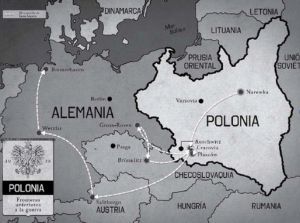 Leon Leyson had much pleasure in his family, and he was generous. With his enthusiasm, with his laughter, with tips and tricks that make life worth living, he was a great source of inspiration to people. He loved to make jokes and had a new joke for every situation. He also had a good ear and a feel for music and languages.
Leon Leyson had much pleasure in his family, and he was generous. With his enthusiasm, with his laughter, with tips and tricks that make life worth living, he was a great source of inspiration to people. He loved to make jokes and had a new joke for every situation. He also had a good ear and a feel for music and languages.
Leon Leyson once said: “The truth is that I didn’t live my life in the shadow of the Holocaust”. His experiences were extraordinary, but they didn’t make him the personality he was. Of course, his experiences had an influence and shaped him, but they didn’t determine his life. He did this himself by defining the events and giving them the space they deserved. This has always given Leon new strength to go on.
Leon Leyson completed the manuscript for his book “Der Junge auf der Holzkiste” only a few months before his death on 12 January 2013. He was already suffering from T-cell lymphoma for more than three years at the time. Nevertheless, he has kept his friendliness and his sense of humor. An incredible story of the will and power to survive in dignity.




